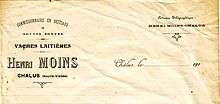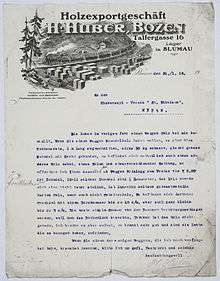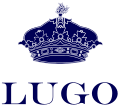Letterhead


A letterhead is the heading at the top of a sheet of letter paper (stationery). That heading usually consists of a name and an address, and a logo or corporate design, and sometimes a background pattern. The term "letterhead" is often used to refer to the whole sheet imprinted with such a heading.
Many companies and individuals prefer to create a letterhead template in a word processor or other software application. This generally includes the same information as pre-printed stationery, but at lower cost. Letterhead can then be printed on stationery (or plain paper) as needed on a local output device or sent electronically.
Letterheads are generally printed by either the offset or letterpress methods. In most countries outside North America, company letterheads are printed A4 in size (210 mm x 297 mm). In North America, the letterhead size is typically 8.5 x 11 inches.
Legal Implications
Despite the fact that modern technology makes letterheads very easy to imitate, they continue to be used as evidence of authenticity.[1][2]
Gallery
 Letterhead (1896) for The National Normal University, Lebanon, Ohio, USA
Letterhead (1896) for The National Normal University, Lebanon, Ohio, USA Letterhead used by Infanta Elena of Spain, Duchess of Lugo
Letterhead used by Infanta Elena of Spain, Duchess of Lugo
References
- ↑ Evidence and the Advocate: A Contextual Approach to Learning Evidence, Christopher W. Behan. LexisNexis, 2014. ISBN 0327175044, 9780327175049
- ↑ Federal Evidence Review, Editor's blog, 2009. http://federalevidence.com/blog/2009/august/documents-produced-discovery-were-“authentic-se”-during-summary-judgment-proceeding
Further reading
- Wheeler, Alina. Designing Brand Identity, pp. 146–147.
External links
| Wikimedia Commons has media related to Letterheads. |
- Gallery of historic letterheads
- Tutorial on using free OpenOffice.org software to create a letterhead